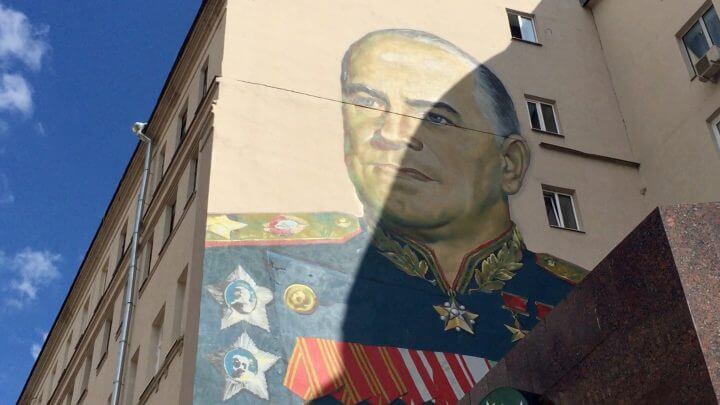Silent voice of Russian graffiti
- By: Nicole Kwok、Daisy LeeEdited by: Nicole Kwok、Daisy Lee
- 2017-10-12

Street art is never welcomed in Russia. With high level of censorship, the authoritarian country does not allow much expression amid the existence of discontented undercurrents.
Some said russian graffiti first took off in the days when the Western influences, especially American cultures, were introduced in the USSR. To be exact, breakdancing, derived from American hip-hop movies, partially brought the beginning of Russian graffiti subculture in the 1980s.
Breakdancers became graffiti artists as they have to create eye-catching backdrops for performances. At the same time in late Soviet period, graffiti became a rebellious medium for the public, especially youth, to express non-conformity. Russian hippies use walls to share ideas of peace and kindness, while pacifists and anti-war groups began to use graffiti as a way to spread moral wrongs of war and their opposition to the Soviet Union in declaring war in Afghanistan.
Russian graffiti artist Dmitri Aske once wrote, "A city is a large sandbox, and graffiti is one of the ways of existing within that sandbox." He thinks that street arts, graffitis or patriotic drawings on the facade or fences of Russia reflects currents events of the place.
In Russia, ‘Bombing' is an important expressing method for local graffiti artists. It is a technique of quickly covering large areas with graffiti by tagging public transports, such as trains, or simply a whole street.
Legal liability is one of the crucial concerns for graffitists all over the world. Though there is no typical law regulating graffiti in Russia, some Russian lawyers pointed out that anyone who is caught for painting graffiti can still be penalised by law enforcement under criminal code.
Hurriyet Daily News reported in 2013 that Russian police had pressed charges of vandalism and graffiti which mocked Vladimir Putin, the president of Russia. According to the law, anyone who is convicted of vandalism may face up to three-year-imprisonment.
However, most Russian graffiti artists and some political activists still chose to convey sensitive messages into graffitis on building's facades. Artists Pavel 183 and feminist street artist Mikaela became active at that time.
Pavel 183- (or P183-) is one of the profound political street artist based in Moscow and is also seen as the Russian ‘Banksy'. Calling himself a ‘political artist', Pavel started addressing his dissents towards the regime since the Russian election fraud in 2011.
"I want to tell people in this country to tell bad from good, this is what our people still can't do," said Pavel, in an interview with state media Russia Today in 2012.
He also reacted to suppression of freedom by posting several canvas that painted with Russian riot police at the Babushkinskaya metro station entrance in 2013 - to remind people that it's time to regain freedom.
"The world is run by dog." Pavel turned these six simple words into a strong sentence, placing it at the left corner of his graffiti in Moscow to warn Russian people not to ignore the political issues evolved in the global community.
Another popular political artist Mikaela, a vital supporter of feminism, have always addressed female issues such as serious prostitution problem and sex abuse on her murals in Moscow.
Majority of her works inspired by late 90s female political leaders who sacrificed themselves in fighting for reasonable rights and freedom.
Starting from the 2010s, there has been a major twist in the the Russian graffiti community. Some artists started to bring graffiti into the ‘modern art' level by participating in exhibitions and having their work posted in galleries in order to survive. Nowadays, the russian street art community also faces another challenge - they have to create more often and works have to become larger in order to get attention.
Alexis Lerner, created a website Post-Soviet Graffiti for free expression and activism against censorship in the post-Soviet region. Lerner witnessed how Russian graffiti criticised political leaders, questioned businesses and corruption. She thinks they are vital to activism and said "Who needs a Twitter revolution when the streets are alive?" in her interview with Vice, a New York online news media.
Reported by Nicole Kwok, Daisy Lee
《The Young Reporter》
The Young Reporter (TYR) started as a newspaper in 1969. Today, it is published across multiple media platforms and updated constantly to bring the latest news and analyses to its readers.

Highlights on Carrie Lam's responses in her press conference

Two out of 40 prepackaged juices found to contain mycotoxin




Comments